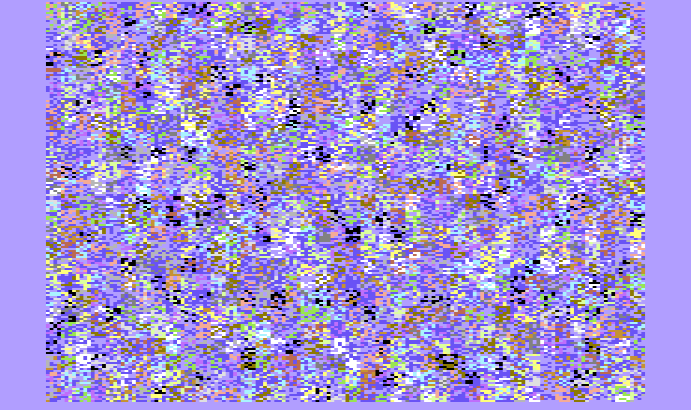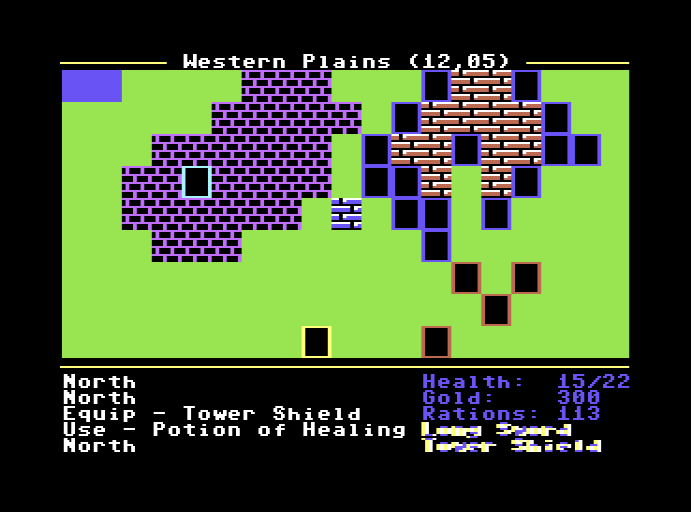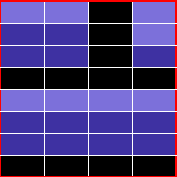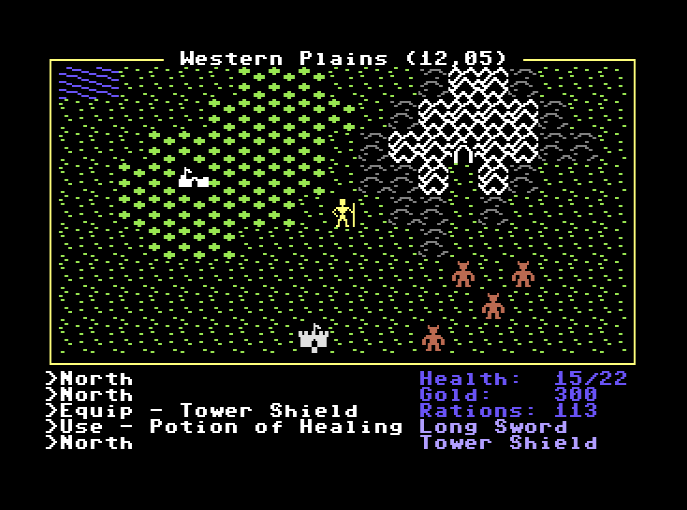I’ve been experimenting a little bit with the bitmap modes on the C64. As mentioned previously there are a choice of high resolution (320×200) or multi-color (160×200) bitmap modes on the C64. There are various pros and cons with these two bitmap modes as well as with using the other character based modes the C64 offers.
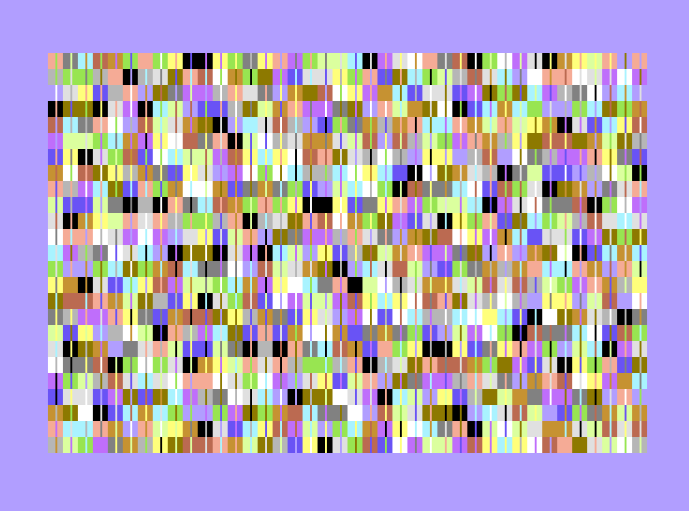
Standard or high resolution bitmap mode shown above has the advantage of giving you the full 8×8 pixels per character cell on the screen but you are limited to only a single foreground and background colour in each 8×8 cell. A full screen uses 8K of memory plus 1K for the colour information.
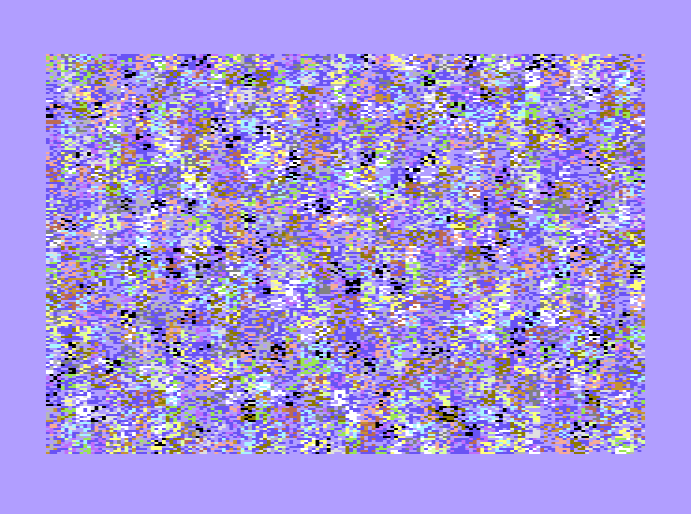
Multi-color bitmap mode has the advantage of allowing you to have up to 4 colours per 8×8 character cell (one of which is a shared background colour) but has the disadvantage of reducing the horizontal resolution in half, displaying double width pixels. It also uses 9K of memory in total but needs an extra 1K for the additional colour information.
Memory usage for both these modes could likely be reduced by 1-2K by using a split screen mode with a text display at the bottom – think Ultima 2 or any of the many graphic adventure games of the 1980s. Many C64 games used a split screen like this to mix modes on a single screen, saving memory and improving display speed.
My initial tests with these bitmap modes are proving quite slow to display compared to my earlier character based version. This is hardly surprising as drawing a single 16×16 pixel tile on the screen will now involve writing at least 40 bytes to the display (characters and colour information) as opposed to just 8 bytes. I’ll give it some further thought and do some more drawing in the various modes before deciding to see if I feel the additional flexibility is worth the increased memory usage and reduction in speed.
